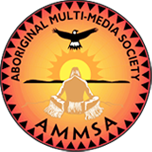Article Origin
Volume
Issue
Year
APTN NATIONAL NEWS REPORTS
Big Brother is watching, and is monitoring not only First Nations protests, but has developed a “Hotspot” reporting system designed to provide “continuous environmental monitoring” and “information dissemination” or existing and emerging risks.” The department has also developed a “Hotspot” binder to summarize and analyze “case files.” The documents that detail the reporting system were obtained under Canada’s Access to Information Act by Russell Diabo and Shiri Pasternak. They found that there was a concerted effort to gather information about what the government termed “hot spots” in the Aboriginal community. Highlighted communities include Tobique First Nation, Tsartlip First Nation, the Algonquins of Barriere Lake, Teztan Biny (Fish Lake) First Nation, Six Nations, Grassy Narrows, Stz’uminous First Nation, the Likhts’amsiyu Clan of the Wet’suwet’en First Nation, Gitxaala First Nation, Wagmatcook First Nation, Innu of Labrador, Pikangikum First Nation and “bands from the coast of Vancouver Island to the shores of the Atlantic Ocean,” the authors wrote on the Dominion News Cooperative Web site. They say Indian Affairs plays a pivotal role in relaying information, including to several other government departments, police and intelligence agencies. Indian Affairs rates First Nations protests into two distinct areas, those organized by band councils and those by “splinter groups,” which are “harder to manage” the department determined, and are “unpredictable.” The documents were drafted in preparation for the June 29, 2007, National Day of Action, “which eventually lead to the shutdown of one of Canada’s busiest highways, the 401 in Ontario, for several hours,” writes APTN. “What we see in these documents—from the hot spot reports themselves, to the intelligence-sharing between government and security forces—is a closely monitored population of First Nations, who clearly are causing a panic at the highest levels of Canadian bureaucracy and political office,” Diabo and Pasternak write.
- 2707 views
